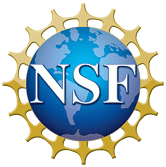
By Sara C. Heredia - October 2015
PAPER CITATION
Furtak, E. M., Seidel, T., Iverson, H., & Briggs, D. C. (2012). Experimental and quasi-experimental studies of inquiry-based science teaching: A meta-analysis. Review of Educational Research, 82(3), 300–329. doi:10.3102/0034654312457206
The fact that inquiry-based science teaching has been defined in various ways makes claims about its effectiveness with students difficult to synthesize. In this meta-analysis, the authors generate a two-dimensional framework to analyze studies of the effectiveness of inquiry-based science instruction in improving student learning outcomes.
Research Design
The authors performed a meta-analysis on a total of 22 research studies from around the world that were published between 1996 and 2006: ten years after the publication of the National Science Education Standards and its Inquiry Addendum. They coded each study along two dimensions of inquiry-based instruction: cognitive domain of inquiry and teacher guidance.
The authors defined four cognitive domains of inquiry.
- Conceptual: content understanding
- Procedural: the methods or practices of science
- Epistemic: understanding of how knowledge is developed
- Social: communication and collaboration
Teacher guidance in science instruction was categorized along a continuum from teacher-led traditional instruction on one end and discovery or student-led inquiry on the other, with teacher-guided inquiry in between.
Once each study was categorized along both dimensions, the researchers calculated the effect size of that study’s treatment. Effect size, which is used to standardize results from studies so that treatments can be compared, is calculated by dividing the mean difference in scores between treatments by the standard deviation of the control. A larger effect size means that the treatment had a more positive effect on the outcome. The desired outcome in all of these studies was student learning.
Once effect sizes were calculated, the authors compared studies along similar dimensions.
Research Findings
The authors found that inquiry-based instruction had a strong positive effect on student learning, particularly in those studies that either emphasized epistemic domains or integrated the procedural, epistemic, and social domains. These studies showed large effect sizes when inquiry-based treatment groups were contrasted with control groups that focused only on content development. These results suggest the importance of engaging students in generating and justifying explanations from evidence.
The studies that showed the smallest effect sizes were those that examined only the social domain or only the conceptual and epistemic domains or that integrated all four cognitive domains. However, even these studies showed some positive effect on student learning.
The other main finding of the meta-analysis is that teacher-led inquiry activities had a greater effect on student learning than did either traditional teaching methods or instruction focused on student discovery. Both teacher-guided inquiry and student discovery had more positive effects on student learning than did traditional science teaching. However, studies of teacher-guided inquiry had a mean effect size that was twice that of student discovery studies.
Implications for Practice
This research has multiple implications for informal science educators who use inquiry-based approaches in their work. First, attention to how science knowledge is constructed had positive effects on student learning. Therefore, inquiry-based activity should highlight the importance of using evidence to generate and justify explanations of phenomena.
Similarly, the finding that teacher-guided inquiry was most effective suggests that educators should guide students and scaffold instruction as they engage youth in inquiry-based activities. For example, informal science educators could support students in developing explanations through use of formal or informal discussion prompts or through activities that require students to use evidence from their investigations in their explanations.




